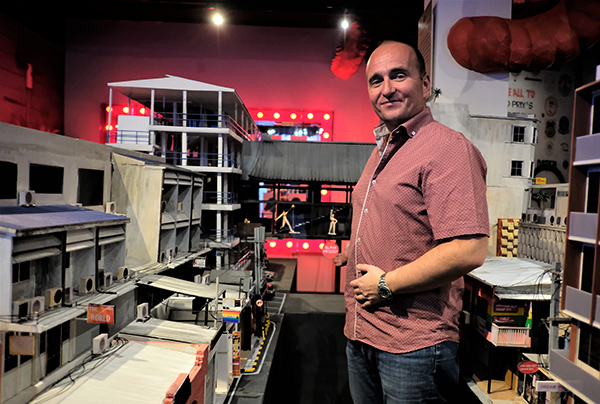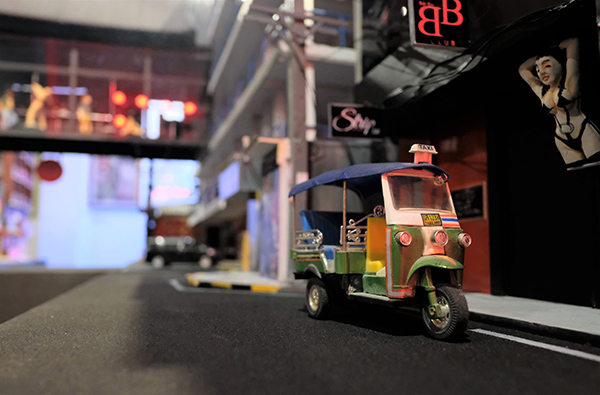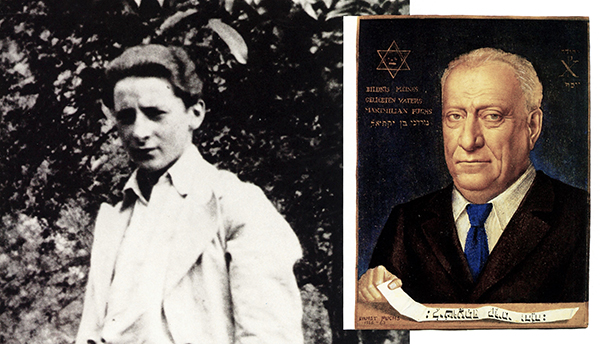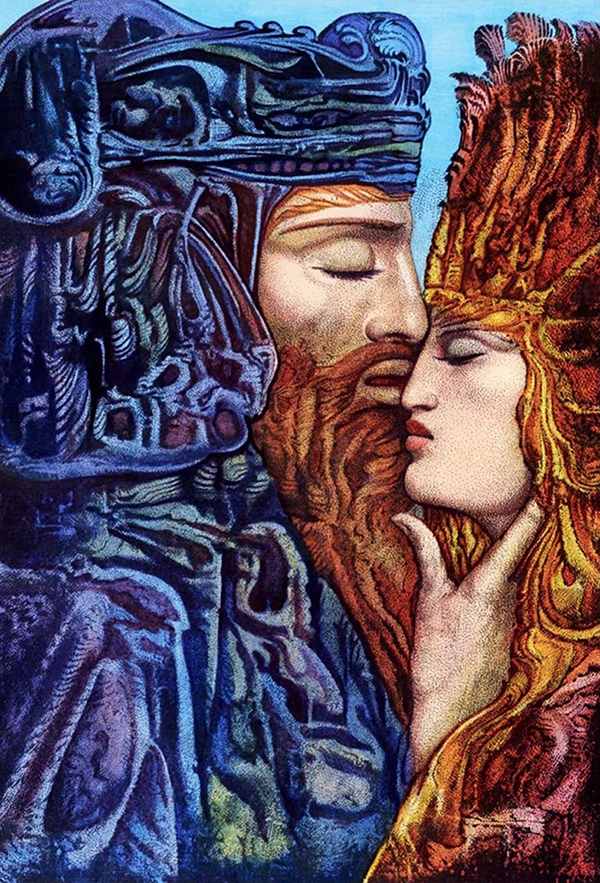Patpong Memories
A new museum of Bangkok’s notorious red-light district is the brainchild of a ‘culturally Jewish’ Austrian with a colorful family history
Tibor Krausz
The Jerusalem Report, January 6, 2020
Bangkok
In his newly opened Patpong Museum, dedicated to Bangkok’s eponymous red-light district, Michael Messner, acting as a guide, is showing me a miniature replica of the streets that are right outside. Constructed painstakingly to scale by the long-term Bangkok resident from Vienna and his local team, the model is a pitch-perfect imitation of the narrow, nondescript alleys of Patpong that come alive only at night and have long served as a pillar of the Thai capital’s sex tourism industry.

Home to a night market for tourists with cheap souvenirs, fake designer watches and myriad knockoffs on offer, Patpong features utilitarian low-rises that house sordid, dimly lit go-go bars whose unventilated interiors are permeated by cigarette smoke and musty odors. Women and transgender women in skimpy bikinis gyrate around chrome poles on stages, ready to sit with customers in return for overpriced “lady drinks.”
Business at these bars is predicated on many foreign men’s proclivity to part with their money in the company of scantily dressed young Thai women. By paying a so-called “bar fine” (anywhere between $20 and $50) to an establishment, a punter can take the hostess or dancer of his choice out for the night to spend some private time with her on mutually agreed terms.
Messner, 42, owns a popular fetish club, two go-go bars and an art gallery, as well as shares in a nightclub, a karaoke bar, and an Irish pub. But it’s his new museum — his personal paean to Patpong — that he seems to cherish most. Inside its main exhibit room, the Austrian is just recounting a storied period in the Bangkok neighborhood’s colorful history when he suddenly stops short. A stamp-sized plastic sign over a miniature go-go bar, he notices, has been broken off in his model of Patpong’s streets, probably by a visitor who brushed up against it.
Visibly upset, Messner calls over the receptionist and tells her to have it fixed ASAP. “The worst thing in a museum is things out of order. Everything has to be in place,” he explains to the Thai woman. “Details are important. Impressions matter.”
The impression he himself creates is of a man who is a stickler for detail. As he guides me around the premises, where exhibits blend erotica with Vietnam War-era history, he pauses briefly at framed, wall-mounted photographs that appear slightly askew to him; he proceeds to align them carefully to ensure they are perfectly horizontal.
The Austrian expatriate has invested $500,000 of his own money in Patpong Museum, a 300 square-meter venue housed on the second floor of a three-story building underneath Messner’s Black Pagoda, a go-go bar that is mounted over a street in the style of a skyway and features large glass wall on two sides, offering peaks from the outside into goings-on inside. “I grew up with exhibitions,” Messner says. “My father was very successful commercially as an artist.”
A sociable man who is a dead ringer for Israeli politician Naftali Bennett, Messner wears his thinning hair pulled into a wee ponytail — a tonsorial choice that has earned him the nickname P’Juk (“Brother Top Knot”) from his Thai friends. “This was my father’s hairstyle. He lost most of his hair, too,” he observes. “We’ve had the tradition of Samson in my family — keep your hair even if you don’t have much left.” He laughs.
Messner is a son of Ernst Fuchs, a renowned Jewish-Austrian artist and Holocaust survivor who was born in Vienna in 1930 and became a founder of the Vienna School of Fantastic Realism in 1948. Fuchs soon relocated to Paris, where, penniless, he lived on the street for a while. “Salvador Dali found him an apartment,” Messner says.
***
In 1956 Fuchs moved to Israel where he lived in the Benedictine order’s Dormition Abbey on Mount Zion, working as a church painter and creating religiously inspired, erotically charged pieces. “I always occupied myself with a kind of painting that renders pictures other people see in dreams or hallucinations,” Fuchs once explained.

During his long career the Viennese polymath, who died at age 85 in 2015, would go on to create thousands of artworks — paintings, prints, sculptures, stage designs, architectural designs, even poems and songs. Adopting a Mischtechnik, or mixed technique, of layering paint by combining egg tempera with oil-based paints and resins to attain a luminous effect, Fuchs frequently turned to mystical and mythological themes inspired both by the Hebrew Bible and the Gospels.
“He was very much into mysticism,” Messner says. Fuchs sought to create an artistic form of religious syncretism between Judaism and Christianity, his ancestral faith and his adopted religion. “My father wanted to create a bridge between them in his art,” he adds.
Just as Fuchs was promiscuous as an artist so he was as a man. He sired 16 children with seven women, only three of whom he married. Although the women weren’t Jewish, several of Fuchs’s children have come to embrace their father’s proto-Jewish identity. “Culturally, I’m very Jewish,” attests Messner, one of whose half-brothers, Emanuel, 57, moved to Israel and served in the Israeli Defense Forces. “Politically too. The fate of Jews in the world concerns me a lot,” he elucidates.
His father’s promiscuity, he argues, was more than just a function of his freewheeling, libidinous lifestyle: it was his response to the mass slaughter of Europe’s Jews by the Nazis. “My father saw a lot of death in the Holocaust so he wanted to spread life (by having so many offspring),” notes Messner, who bears the family name of his mother, with whom Fuchs had five children. “He hated those [expletive] Nazis. So much was lost because of them,” he adds, his eyes welling up with tears as he becomes monetarily overcome with emotion.
“My father was an extraordinary man — a titan of an artist, a genius,” avers Baruch Messner, 37, a younger brother of Michael’s who lives in Bangkok and helps out with his various business interests, including the museum. Toweringly tall with swarthy skin and a neatly trimmed beard, Baruch, too, wears his long, thinning hair pulled back into a ponytail.
“As a father, though, he was mostly absent,” Baruch adds. “He was kind and caring, but he didn’t have much time for us.”
Fuchs was a man who appeared to be forever in a hurry to make the best of his time on earth. The son of a Jewish father and a Christian mother, early in the war he was interned in a transit camp for children of mixed racial heritage by the Nazis. The artistically precocious boy was saved from almost certain death in a concentration camp by his mother, who divorced her Jewish husband, Maximilian, and had Ernst baptized as a Catholic. Maximilian, who came from a family of orthodox Jews and once flirted with becoming a rabbi, escaped death by resettling in Shanghai, China, shortly after the Anschluss, Nazi Germany’s annexation of Austria, in 1938.
Yet Fuchs would rarely brood over his wartime experiences, at least in public. An inveterate bohemian who was chummy with Salvador Dali, he hobnobbed with celebrities and luminaries. In public he sported flamboyant pillbox caps with his own designs imprinted on them and drove around in a golden Rolls-Royce Phantom, whose interior he bedecked with murals and intarsia. With his prominent nose and bushy beard, he resembled a New Age rabbi from a hippie colony.
Celebrated in his native Austria, where he came to be lauded as a national treasure in the vein of the Viennese symbolist Gustav Klimt, one of his formative influences, Fuchs lived like a larger-than-life character who partied frequently, well into his senescence. “My father was well known as a party animal,” Michael Messner observes. “I remember going with him to a big nightclub in Monaco when he was already an old man. Everyone knew him there. He lived the life of a rock star.”
Some of Fuchs’s nonconformist lifestyle choices have clearly rubbed off on his son. Messner landed in Bangkok two decades ago in order to have some of his father’s sculptures cast in bronze. During his own visit to the Thai capital Fuchs reveled in the city’s libertine ambience and glitzy Buddhist arts. “He loved it here,” Messner recalls. “He was in his element.”
Messner, too, loved it in Bangkok. He began dating a local woman, with whom he has since had five children, and decided to settle down permanently. “You’re 22 years old, you have some money in the bank and you’re in Bangkok. You start to think of how you can stay by making more money,” he recalls.
While weighing his options, Messner met an elderly Thai man, whom he would soon know fondly as Uncle Vichit and who turned out to be a kingpin of sorts in Patpong’s red-light district. A barber by trade who became a right-hand man of the army generals whose hair he had been cutting, Uncle Vichit took the young foreigner under his wings.
“He showed me an empty building and told me I could rent it on condition that I’d pay big money up front and he could kick me out any time he wanted,” Messner says. “He also introduced me to people — influential, well-connected people from the army.”
The top brass wield great economic and political power in Thailand, where military coups have long been routine. The current prime minister, Prayuth Chan-ocha, is a former army chief who led a coup that ousted a democratically elected government in 2014. Senior army and police officers often hold stakes in nightlife venues and while prostitution is technically illegal in the predominantly Buddhist nation officials turn a blind eye to it.

The sex industry helps undergird Thailand’s thriving tourism industry and is a source of revenue for people of influence via kickbacks and rental fees. It’s also a source of employment for young women from the country’s rice-farming boondocks with limited job prospects. “Let’s face it: we’re in a country with many poor people who have little education,” Messner offers. “Thais are a playful people and, like it or not, they don’t think selling or buying sex is immoral. Licentiousness is part of their culture.”
Yet, for all that, Messner’s first venture in 2001 — a billiard bar where male customers could imbibe alcoholic beverages while playing pool with young women — wasn’t a roaring success. “It was a disaster,” he remarks. “I decided to go deeper into the sex industry. You could say I lost my innocence.”
The Austrian hit upon a “glorious idea,” as he puts it: a venue for people who were into kinky stuff. At his BarBar Fetish Club, which remains popular, all comers had to wear black and, to gain entry, buy a drink for the equivalent of $30. Anything else would cost extra. The establishment’s tagline is “Try something different,” which entails, in Messner’s words, “a little bit of candlewax play, a little bit of rope play, a little bit of bondage.”
The club, situated above a more conventional go-go bar he runs, helped turn his fortunes around in Patpong’s highly competitive nightlife scene. “It took us three months to break even. This bar has made us millions of dollars,” he notes. “It was a matter of catering to certain needs.”
***
A pervasive view in the West has it that much of Thailand’s sex industry is based on the exploitation of vulnerable young women from disadvantaged backgrounds. Messner denies that this is the case at his clubs. “We don’t exploit anybody,” he insists. “They do what they want [with customers], they come and go when they want. I’m not pimping anybody. I make money from drinks.” The women who work at his bars take a cut from the beverages they coax customers into buying for them.
It was while running his bars over the years that Messner, who had helped curate his father’s Ernst Fuchs Museum in a repurposed Art Nouveau villa in Vienna, began to be intrigued by the topsy-turvy fortunes of Patpong. He set about collecting mementoes from the red-light district’s past into a cardboard box at home.
In the midst of Bangkok’s teeming and sprawling urban jungle, Patpong stands on land, owned by a Sino-Thai family, that as recently as in the mid-20th century still featured little beyond bucolic banana plantations and a teakwood mansion. The latter was occupied by Japanese military police during the Second World War when Thailand was a tropical battleground between invading Japanese forces and the Allies. A large part of Southeast Asia’s turbulent recent history, Messner realized, could be condensed into a few blocks of low-rises where he was selling drinks, at a premium, to his customers.
As his museum makes clear, it was the Cold War that made Patpong. By the 1950s, as Indochina was becoming a battleground of rival political ideologies between East and West, the neighborhood, then a budding business district, came to be home to the local headquarters of foreign airlines, news services and corporations like IBM and Shell. “Patpong was Thailand’s window onto the world back then,” Messner says.
Then came the Vietnam War. Thanks to its well-equipped communication infrastructure, Patpong served as a hub for CIA operatives who were helping run covert missions during a clandestine war in Laos, a small landlocked nation neighboring Thailand, in the 1960s. One was Anthony Poshepny, a U.S. marine turned CIA operative from Long Beach, California, who trained guerrilla units of Hmong tribesmen in the mountains of Laos to fight local communist Pathet Lao forces.
Poshepny, known as Tony Poe, may have served as an inspiration for Colonel Kurtz, a battle-crazed soldier played memorably by Marlon Brando, in Frances Ford Coppola’s Vietnam War movie Apocalypse Now. A gung-ho veteran of several wars, the American would drop the severed heads of enemy soldiers over Lao villages from a helicopter in a gruesome form of psychological warfare. He collected the ears of enemy soldiers as proof of his kills. Rubber ears on display at the museum testify to this gristly practice by a man who “fought war with gusto.”

The year 1969 saw the first go-go dancer appear in Patpong. She was a young Thai woman shaking it on an improvised stage to rock ‘n’ roll songs emanating from a jukebox. “Today the go-go girl is the center of Patpong’s nighttime attractions, but in early 1969 she didn’t yet exist,” a museum label explains. “Someone had to create her.”
That someone was a Bangkok-based U.S. Air Force pilot who opened the first bar in the area called Grand Prix. Soon other bars followed with names like Mississippi Queen (where scenes from the 1978 Hollywood war drama The Deer Hunter were filmed), offering ever raunchier forms of entertainment. In a few short years Patpong came to be synonymous with sex tourism far beyond Thailand’s borders.
A long line of Hollywood superstars and rock stars began arriving for visits, Robert de Niro, Christopher Walken and David Bowie, among them. Some of them lingered for days in the anything-goes milieu of hedonistic debauchery. Their photographs are displayed alongside contemporary communist propaganda posters and anti-communist leaflets produced by the CIA for the benefit of Thai, Cambodian and Vietnamese villagers.
In an adjoining room, past plastic strip curtains, awaits an imitation bar from a nightclub, complete with a bartender on hand. Covering the walls like wallpaper are clippings of old articles by Bernard Trink, now 88, a Bangkok-based Jewish journalist from New York. For nearly four decades from the mid-1960s onward, Trink documented his raunchy, no-holds-barred exploits at Bangkok’s nightlife scenery for two local English-language newspapers in a popular weekly column called “Nite Owl,” illustrated by cartoons and pictures of go-go dancers.
You can order a drink or two on site right there in the museum. You might need one just to steady your nerves ahead of what awaits next door: explicit X-rated exhibits that testify to the realities of life in Bangkok’s primary red-light district.
“Patpong fascinates me. There’s so much life and so much history all in one place,” Messner enthuses. “I’d say I’m an artist at heart, like my father was,” he adds, implying that his museum is his attempt at inspired creativity. “I’ve always loved museums,” he goes on. “They let you immerse yourself in a subject no matter what it is.”
Another exhibit that looks slightly askew catches his eye. He hastens to straighten it.